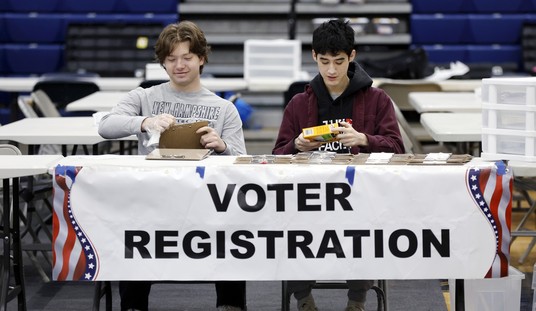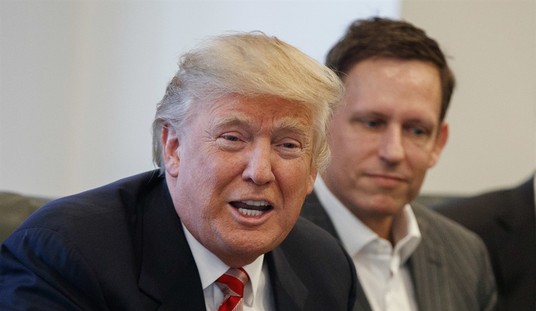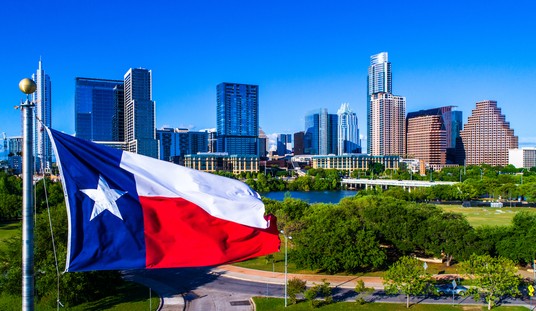
They’re loud. They’re boisterous. They’re the SEIU…and they’re not as bright as they think.
The fast-food workers who are being pushed by the SEIU to take to the streets in a “nationwide” strike on August 29th, as part of the SEIU’s four-year old plan to collect union dues from the fast-food industry’s 3.7 million workers, have placed themselves in a precarious position legally.
As part of its battle strategy to unionize the industry, in its 2009 blueprint, the SEIU declared that economic issues (wages) would be its rallying cry:
Use a living wage as a vehicle to excite, build momentum, build worker lists/ID potential leaders and potentially support collective bargaining. We believe we will have enough traction with an ordinance to use as a legitimate tool for organizing and potentially as legislation to raise standards.
One of the campaign’s main websites also makes it clear that wages–and nothing else–is the key issue.

To refresh your memory a little bit: Beginning with a strike in New York City last November, the SEIU-backed fast-food workers have gone on strike multiple times in various cities throughout the summer. In every case, increasing fast-food workers’ wages has been the rallying cry.
Even while she disingenuously pretends that the fast-food effort is a “grassroots” type of protest, SEIU boss Mary Kay Henry puts the primary issue of wages at the forefront in a Huffington Post piece as recently as August 8th.
Indeed, here also, the strikers in this video also declare their fight is about wages.
To be sure, the SEIU’s push to increase fast-food workers’ wage to $15 an hour is merely a ruse and part of its strategy to unionize your local fast-food franchise.
However, by calling a “nationwide” strike on August 29th, the SEIU apparently believes the job action will help its cause.
Workers in eight cities, including New York, are planning a major walkout on Thursday, Aug. 29.
The move is part of a growing campaign by disgruntled employees from companies including KFC, McDonald’s, Burger King and Wendy’s to fight for $15 an hour and the right to form a union. The movement is backed by the Service Employees International Union and other labor and religious groups.
So, why is the fact that SEIU-backed strikers are pushing for higher wages important?
Very simply, for legal reasons, the fact that the SEIU–and now those who have become the SEIU’s ‘useful idiots‘ have now made their fight about “a living wage” or “Fight for $15”–is very significant.
In any strike, an employer has the right to replace (not fire) strikers. However, generally speaking there are two types of strikes: 1) Unfair Labor Practice Strikes, and 2) Economic Strikes.
In an unfair labor strike, while strikers can be replaced, they must be reinstated at the end of the strike.
However, due to a 1938 U.S. Supreme Court ruling, in an economic strike, strikers may be permanently replaced and only offered reinstatement when an opening occurs.
Here is what the National Labor Relations Board states [in PDF] about economic strikers.
Strikes for a lawful object. Employees who strike for a lawful object fall into two classes “economic strikers” and “unfair labor practice strikers.” Both classes continue as employees, but unfair labor practice strikers have greater rights of reinstatement to their jobs.
Economic strikers defined. If the object of a strike is to obtain from the employer some economic concession such as higher wages, shorter hours, or better working conditions, the striking employees are called economic strikers. They retain their status as employees and cannot be discharged, but they can be replaced by their employer. If the employer has hired bona fide permanent replacements who are filling the jobs of the economic strikers when the strikers apply unconditionally to go back to work, the strikers are not entitled to reinstatement at that time. However, if the strikers do not obtain regular and substantially equivalent employment, they are entitled to be recalled to jobs for which they are qualified when openings in such jobs occur if they, or their bargaining representative, have made an unconditional request for their reinstatement. [p. 10, emphasis added.]
Now, while it is doubtful that any of the fast-food chains have the testicular fortitude to actually exercise their legal rights, here is how the August 29th strike could play out:
8:00 am (in some city)–As the SEIU bus pulls up with its astroturf protesters, the morning shift at Mickie D’s walks off the griddles and out from behind the counters, picking up picket signs and beginning to parade around on the sidewalk in front of the store.
8:01 am–A separate bus pulls up across the street and new Mickie D employees in fresh Mickie D uniforms walk into the store and assume the abandoned work stations.
8:10 am–Mickie D’s attorneys have noticed delivered (on the sidewalk) to each striker notifying him or her that, as each striker is engaging in an economic strike, by 8:20, the employer will have permanently hired all of the temporary replacement workers it needs and, by 8:30, will be converting said temporary replacement workers into permanent replacement workers. Further, there will no longer be a need for the individual strikers’ services, however, should an opening occur, they will be eligible for recall based upon their date of hire and qualifications for said vacancies.
Now, again, it is unlikely that any of the fast-food employers are willing to do what they have the right to do but, if they did, it could be that easy.
And, what could the SEIU and its astroturf friends do? What would they do?
They’d scream and gnash their teeth for a while. They’d call for boycotts. They’d get Jesse Jackson to go on Al Sharpton’s MSNBC show and scream about the evils of corporate America…everything they are already doing, by the way.
However, does anyone in the public really care? Would people really stop scarfing Mickie D’s because someone got replaced in New York? Really?
Most of the Lefties supporting the SEIU’s cause aren’t Mickie D’s customers anyway. They’re the earthy, crunchy, vegan types. [Okay, granted, maybe Michael Moore will stop eating Big Macs…for a while.]
The point is, though, if Mickie D’s and the rest of the fast-food operators wanted to, they could follow Barack Obama’s modus operandi: “If they bring a knife to the fight, we bring a gun.” And, if so, they could prevail in the long run.
That’s sage advice, by the way, from the President whom the SEIU put into office. Heck, the fast-food companies are already on the President’s Enemies List–or, at least his wife’s enemies list. So, no real loss there either.
If Mickie D’s or any other fast-food operator chose to do this, Mary Kay Henry and the SEIU (despite their cries) would have no one to blame but themselves.
It would be messy and it would be public…but, in the end, fast-food eaters the world over will still line up in the drive thru.
Instead, however, Mary Kay Henry and her SEIU team are banking on what winning by they normally do: By being loud and boisterous, in your face, night and day. [See Saul Alinsky.]
Perhaps, again, it’s time for the fast-food companies to follow Barack Obama’s lead here as well: “If you get hit, we will punch back twice as hard.”
_________________________
“Truth isn’t mean. It’s truth.”
Andrew Breitbart (1969-2012)
“There are two sides to every issue: one side is right and the other is wrong, but the middle is always evil….In any compromise between food and poison, it is only death that can win. In any compromise between good and evil, it is only evil that can profit.”
Ayn Rand
Cross-posted at LaborUnionReport.com
Related: The SEIU’s 2009 Blueprint:














Join the conversation as a VIP Member